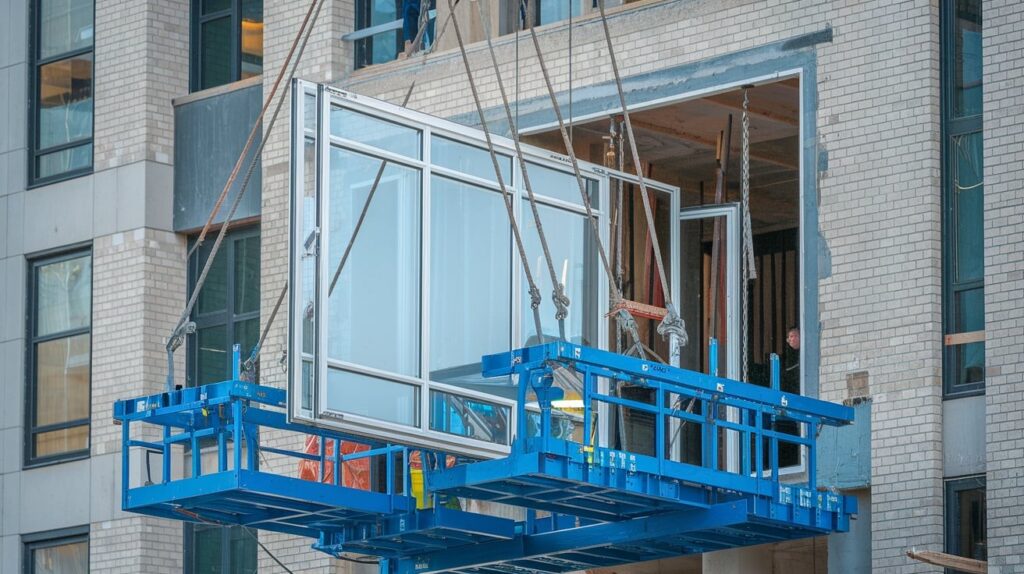Installing large windows and frames has become a key feature of modern home design. Expansive glass panels allow more natural light, enhance views, and create a spacious, luxurious feel. However, while oversized windows look stunning once installed, ensuring their safe and secure installation is quite challenging.
That’s where rigging solutions come into play. By employing professional rigging techniques and lifting equipment, contractors and builders can manage even the heaviest window installations with accuracy and confidence, thereby minimizing the risk of damage to materials and injuries to workers.
The Challenge of Large Window Installations
As architectural trends favor open layouts and panoramic designs, windows have increased significantly in both size and weight. Today’s insulated glass units can weigh several hundred pounds, especially when using triple-pane or laminated safety glass. Add in bulky frames made from aluminum or composite materials, and you face a lifting challenge that requires more than just manpower.
Traditional methods, such as forcing the glass into place or balancing it on ladders, can cause serious safety issues and result in costly errors. One slip or misjudgment can crack a costly pane, damage the frame, or even result in injury. Rigging removes that danger by giving control, balance, and stability throughout the entire installation.
What Rigging Means in Construction
Rigging involves the use of specialized tools and techniques to safely lift, move, and position heavy materials. In construction, it’s commonly used for handling steel beams, HVAC units, or large prefabricated structures. The same principles apply to residential work, such as window installations.
The goal is simple: lift with accuracy, not brute force. A proper rigging setup utilizes ropes, slings, pulleys, hoists, and lifting attachments to support heavy loads while maintaining stability and balance. When working with large windows, this enables installers to guide each unit smoothly into its opening, often with millimeter-level precision.
Standard Rigging Tools for Window Installation
You don’t need industrial cranes for every job, but having the right rigging equipment makes a big difference. Here are some of the most effective tools used for lifting and positioning large windows and frames.
- Suction lifters and glass manipulators: These attach directly to the glass surface, enabling installers to lift and tilt panes safely without touching the fragile edges.
- Hoists and winches: Offer controlled vertical lifting power, perfect for raising heavy window units to upper floors or roof levels.
- Slings and straps: Used to support frames or multiple glass panels during transport and installation.
- Pulleys and load blocks: Offer mechanical advantage, making it easier to lift heavy materials with less effort.
- Temporary lifting rigs: Basic scaffolding or tripod systems can be employed to support windows during alignment.
With the right combination of these tools, even the heaviest or most awkwardly shaped windows can be managed safely and efficiently.
Planning Is Everything
Before starting any lifting, professional riggers and contractors continually develop a detailed plan. For window installation, this includes:
- Calculating weight and balance: Knowing the exact load helps determine the required rigging gear.
- Choosing strong anchor points: These could be structural beams, roof trusses, or portable lifting frames that can safely support the weight.
- Checking site conditions: Uneven ground, slopes, or tight spaces may affect the type of rigging system used.
- Establishing communication: Everyone on the crew must understand the plan and hand signals to ensure smooth coordination during the lift.
This preplanning prevents delays, minimizes accidents, and ensures that every step, from unloading to final placement, proceeds smoothly.
Safety First, Always
Rigging makes lifting safer, but only when it’s done correctly. Every piece of equipment should be inspected before use, and no one should ever stand directly under a suspended load. Workers should wear gloves for grip, safety glasses, and protective footwear.
For high or multi-story window installations, fall protection equipment is crucial. Contractors should adhere to OSHA or local safety standards to ensure compliance and safeguard their team.
The golden rule is to move slowly and steadily. Quick or jerky lifts increase the risk of swinging loads and potential damage.
The Payoff: Perfect Placement Every Time
When done correctly, rigging transforms what could be a risky and time-consuming task into a safe and efficient process. Contractors can precisely position large windows and frames where they belong, reducing stress and ensuring the clean, seamless appearance homeowners expect.
For homeowners, this offers quicker installation, lower risk of damage, and the reassurance that their investment is being managed professionally.
Final Thoughts
Rigging isn’t just for cranes and tall construction sites. It’s an essential part of modern homebuilding, especially as design trends favor prominent, heavy architectural features.
By utilizing innovative rigging solutions, contractors can lift and install even the most enormous windows and frames with ease and precision. The result is a safer job site, a flawless finish, and a home that feels brighter, sturdier, and built to last.

